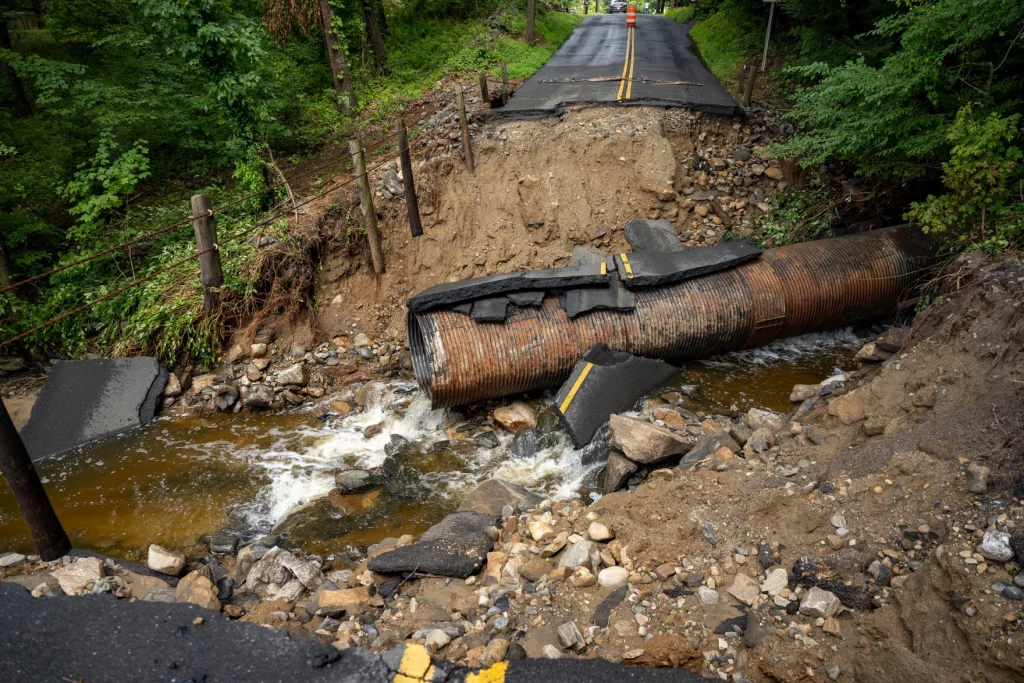Connecticut is working to help towns and cities become more resilient to the impacts of climate change, in the wake of more intense and frequent extreme weather.
This summer in Connecticut started out with extreme heat in June and July. Then in August, unexpected heavy rainfall flooded southeast Connecticut, killing three people. Roads, bridges, homes and businesses were washed out, causing hundreds of millions of dollars in damages and leading to a federal disaster declaration.
Summer 2023 also brought its own share of disastrous flooding and extreme temperatures to the state.
“Knowing how climate impacts are accelerating and expanding, there’s a lot of investment that communities are going to need to make in order to address these extreme weather challenges,” said Katie Dykes, commissioner of the state Department of Energy and Environmental Protection.
The DEEP Climate Resilience Fund (DCRF) is one response seeking to prepare communities for more climate impact. For the second time, the agency is looking to fund and assist municipalities to develop resilience projects, and apply for applications for federal funding.
In the coming month, DEEP is looking to hear the community’s input on how to use state dollars for climate resilience.
The first DCRF projects were chosen last year, and include flood resilience for areas along rivers and efforts to reduce heat islands. Those climate projects and grants are in early stages of development, according to a DEEP spokesperson.
Infrastructure projects require many steps and take a while to complete. They also need a great deal of investment, and most federal funding for the projects requires a local match fund.
“That’s a barrier for many of the municipalities, and that stops projects going forward,” said John Truscinski, director of resilient planning at Connecticut Institute for Resilience and Climate Adaptation (CIRCA). “That’s another thing that DEEP is trying to fund with this new program.”
He said other things DEEP is looking to fund are also in CIRCA’s recent Resilience Roadmap, such as establishing stormwater authorities in more towns.
“In a lot of cases, what we see is there’s stormwater infrastructure that was designed for a different set of assumptions about the intensity of rainfall that we get in Connecticut,” Truscinski said, “anywhere that you dump 15 inches of rain is going to be a problem for the existing infrastructure.”
Along with bond funding for the DCRF, in 2024 the state legislature authorized a Climate Resiliency Revolving Loan Fund, which would make low-interest loans available to municipalities to use on infrastructure repairs and resiliency projects.
It was among the few state legislative efforts to combat climate change that passed both chambers. One bill tackling resiliency didn’t get a floor vote, and a House-approved bill that sought to reduce greenhouse gases wasn’t taken up in the Senate.
Learn more
DEEP will accept written comments on the fund until Nov. 8. The first virtual public meeting will be held on Oct. 24, from 6-7:30 p.m. and the second virtual meeting will be on Oct. 30 from 1-3 p.m.
More information is available online.
This story was first published October 4, 2024 by Connecticut Public.

